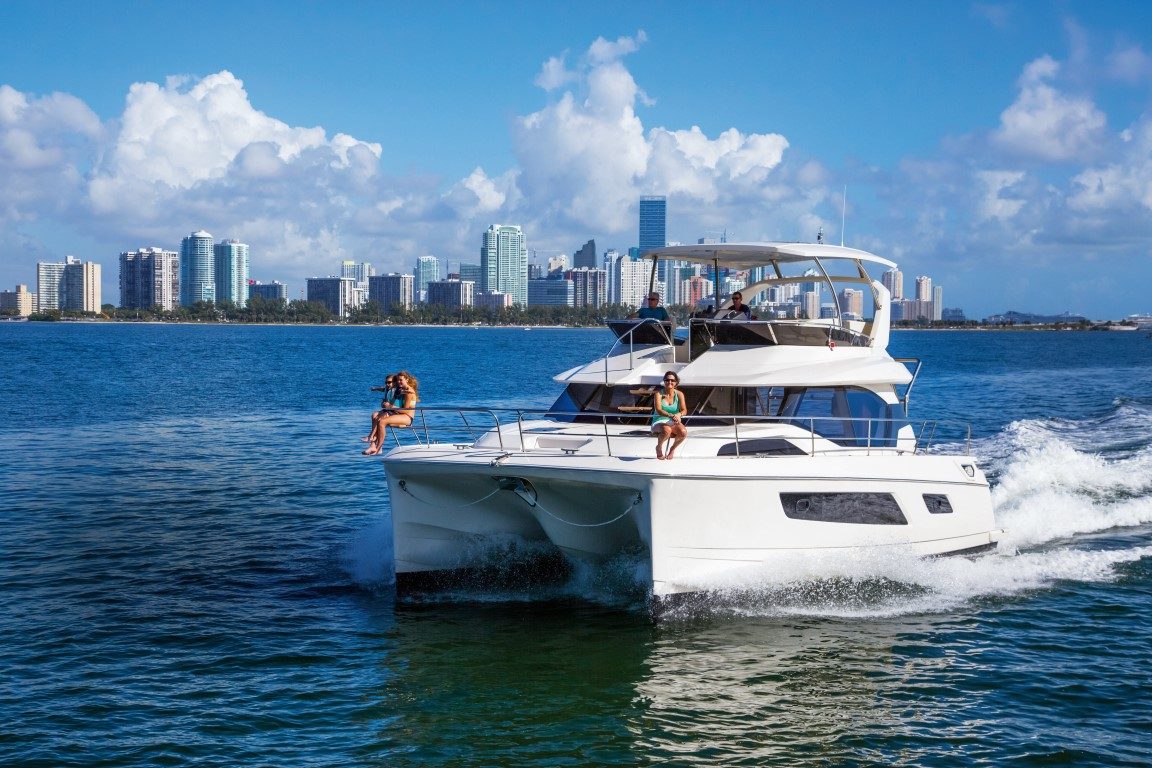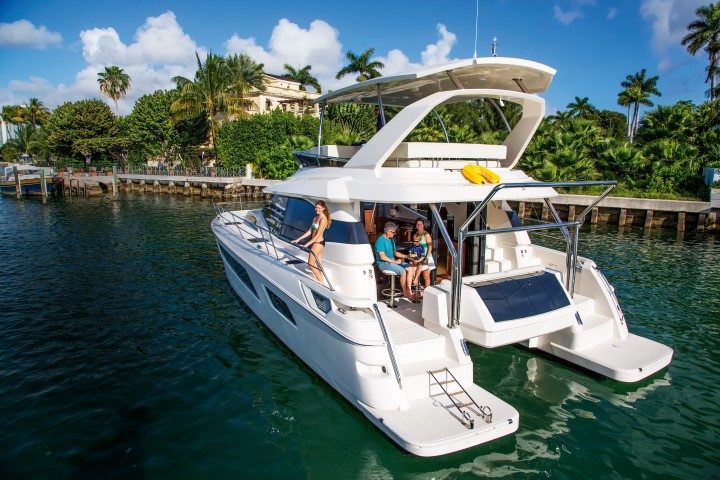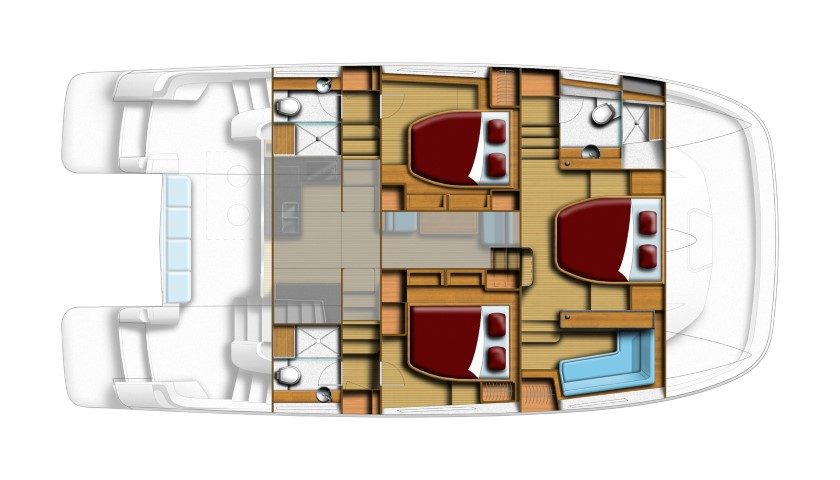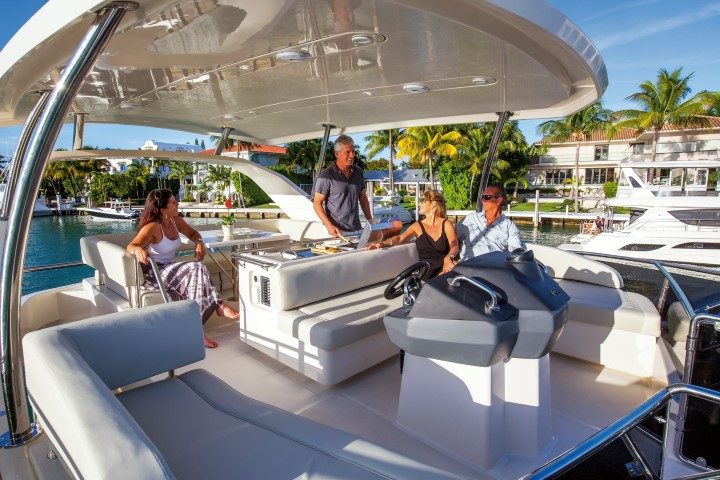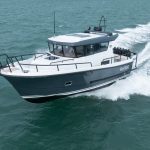‘Behemoth’ is a word which springs to mind or, perhaps more nautically, ‘leviathan’.
- Great load carrying ability
- Room for up to twenty day-guests
- Lends itself to entertaining
- Bulbs equal no slamming, improved speed and economy
- Built in China
- Perfect for charter work
- Underwater bulbs an unusual feature
- Available in multiple layouts

